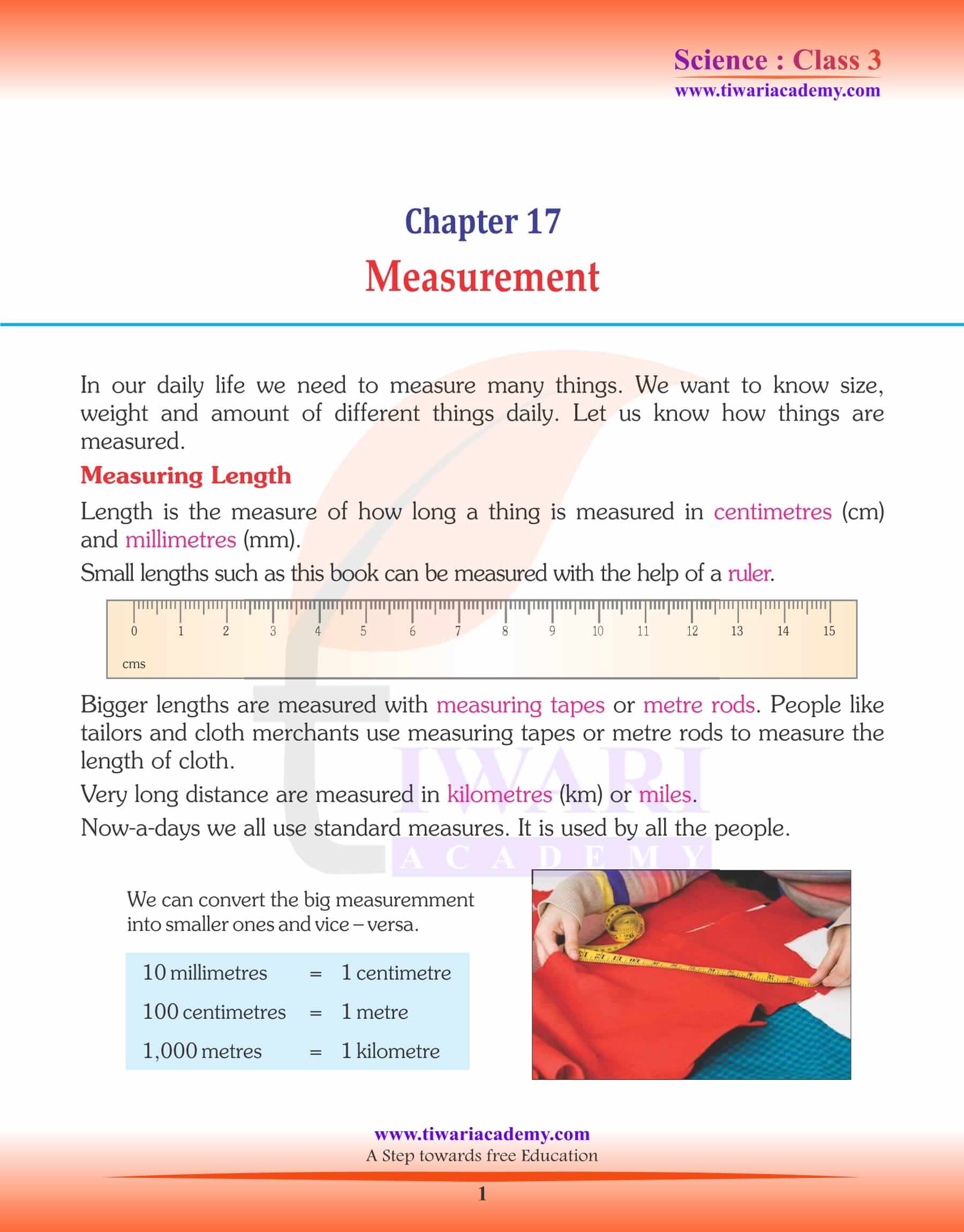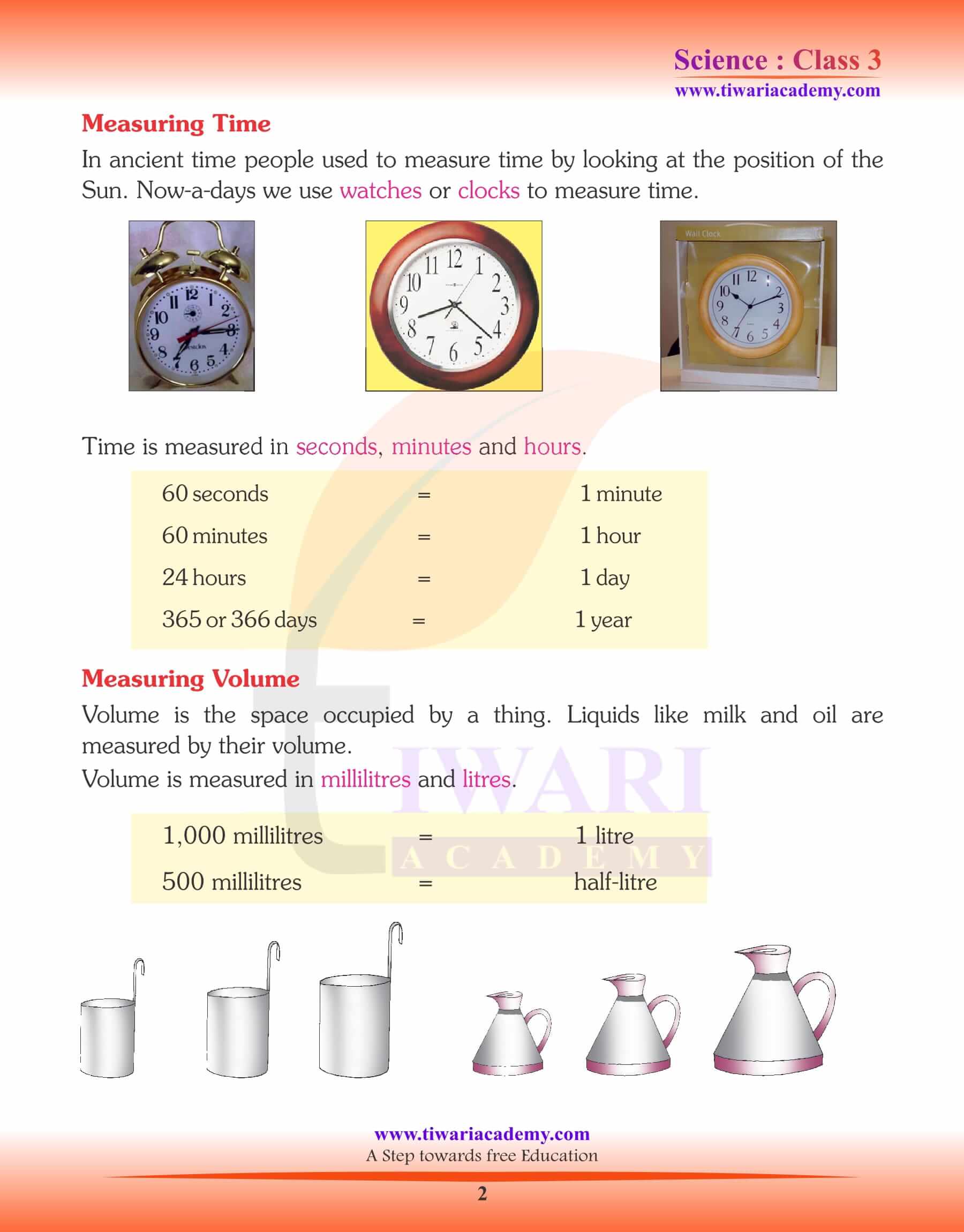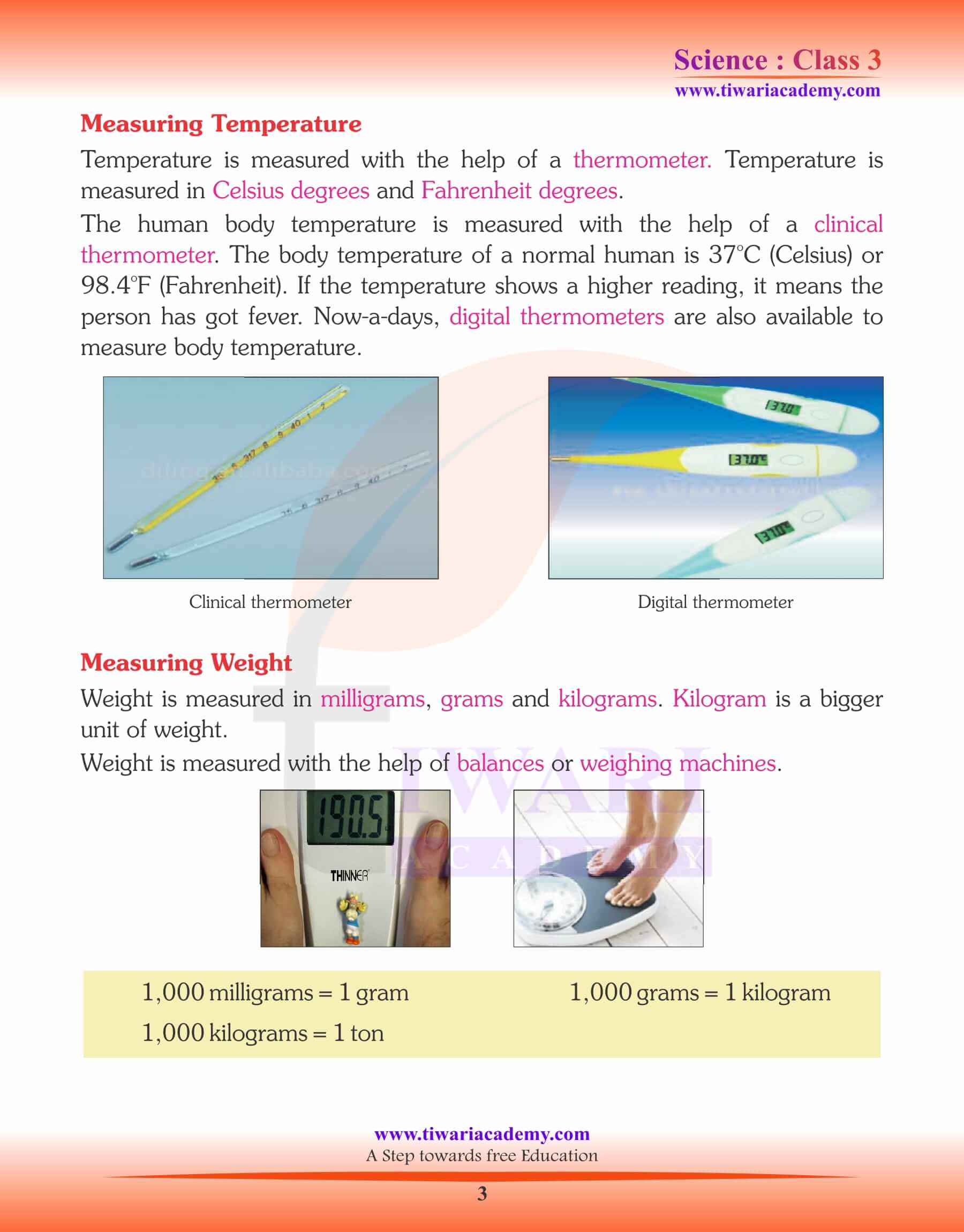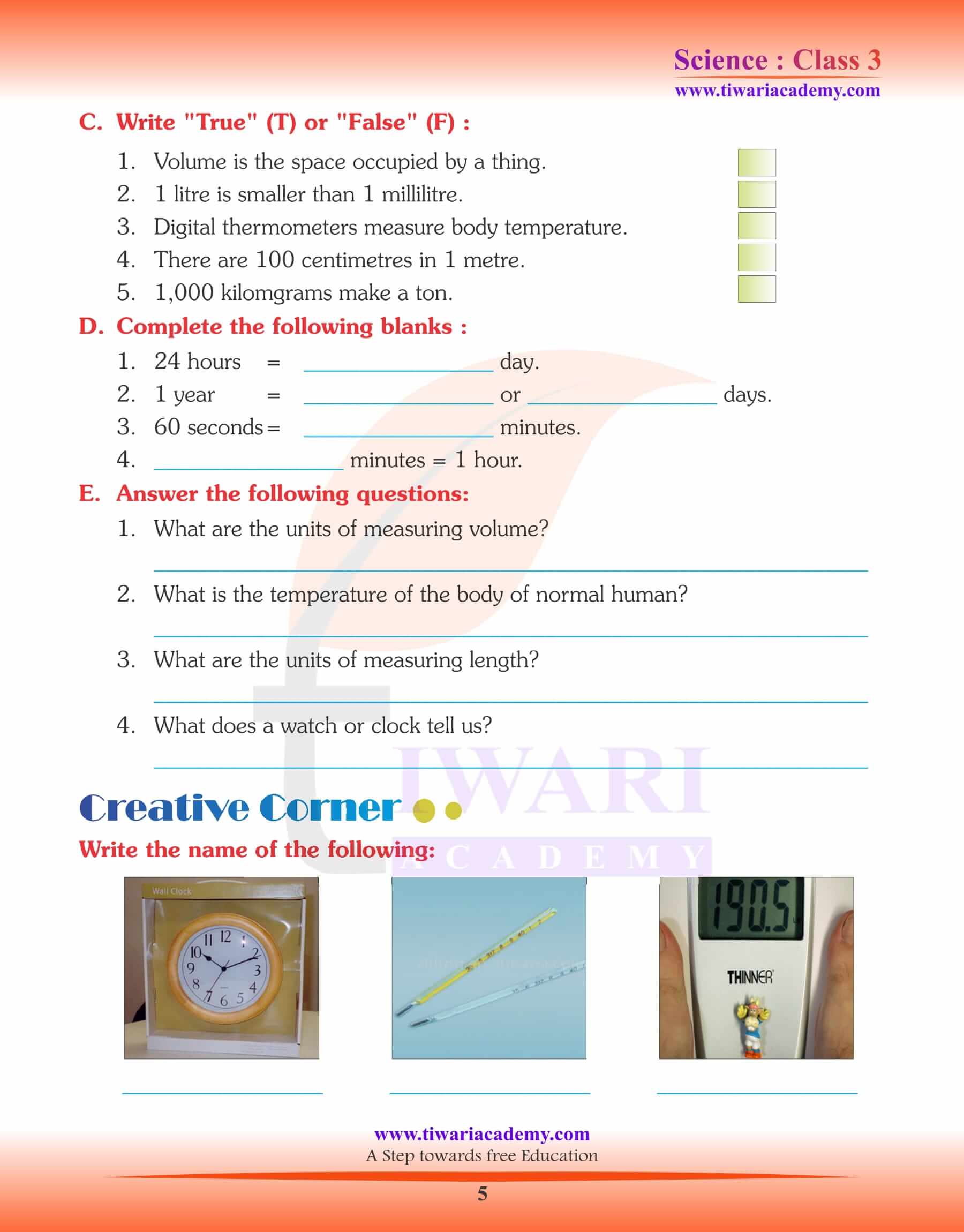NCERT Solutions for Class 3 Science Chapter 17 Measurements with interesting pictures and facts. It is good for the new academic session 2025-26. Students can get it free in PDF and video format to use offline. The online study of Science in class 3 is also available. To study through mobile, download the Tiwari Academy app for free for all the contents in class 3.
Study Material for Class 3 Science Chapter 17
Class 3 Science Chapter 17 Measurements
Measurement
Measurement helps us to know the exact length, quantity or volume of things. In the ancient times, people did not have measuring tools. They used their hands and feet to measure length. They also used sticks to measure length. Now we have various tools to measure length, weight, time and volume.
Measuring Length
Length is the measure of how long a thing is measured in centimetres (cm) and millimetres (mm). Small lengths such as this book can be measured with the help of a ruler. Bigger lengths are measured with measuring tape or metre rod. People like tailors and cloth merchants use measuring tapes or metre rods to measure the length of cloth. Very long distances are measured in kilometres (km) or miles.
We can convert the big measurement into smaller ones and vice – versa.
10 millimetres = 1 centimetre
100 centimetres = 1 metre
1,000 metres = 1 kilometre
Measuring Time
In ancient time people used to measure time by looking at the position of the Sun. Now-a-days we use watches or clocks to measure time. Time is measured in seconds, minutes and hours.
60 seconds = 1 minute
60 minutes = 1 hour
24 hours = 1 day
365 or 366 days = 1 year
Measuring Volume
Volume is the space occupied by a thing. Liquids like milk and oil are measured by their volume. Volume is measured in millilitres and litres.
1,000 millilitres = 1 litre
500 millilitres = half-litre
Measuring Temperature
Temperature is measured with the help of a thermometer. Temperature is measured in and Celsius degree Fahrenheit degrees. The human body temperature is measured with the help of a Clinical thermometer. The body temperature of a normal human is 37⁰ C (Celsius) or 98.4⁰ F (Fahrenheit). If the temperature shows a higher reading, it means the person has got fever. Now-a-days, digital thermometers are also available to measure body temperature.
Measuring Weight
Weight is measured in milligrams, grams and kilograms. Kilogram is a bigger unit of weight.
Weight is measured with the help of balances or weighing machines.
1,000 milligrams = 1 gram
1,000 grams = 1 kilogram
1,000 kilograms = 1 ton
Important Points
1. Measurement helps us to know the exact length, quantity or volume of a thing.
2. Cubit, hand span and foot span are non-standard units of length.
3. The standard unit of length is metre.
4. The commonly used units for weight are grams and kilograms.
5. The commonly used units to measure capacities are millilitres and litres.
6. The units of time are seconds, minutes and hours.
7. We measure temperature in Centigrade and Fahrenheit.
8. The temperatures of our body is measured in Fahrenheit and the temperature of weather is measured in centigrade.
Select the correct answers for given questions:
Which of the following is not a unit of length?
Which of the following is measured in litres?
Which of the following is the biggest unit of time?
Fill in the blanks:
1. Weight is measured with the help of a ______.
2. People in ancient time used to measure time with the help of the
___________.
3. Liquids are measured by their _______.
4. Small length can be measured with a _______.
5. Long distances are measured in _______.
Answers:
1. balance
2. sun
3. volume
4. ruler
5. kilometres
What did the people use to measure lengths in the ancient times?
In the ancient times, people did not have measuring tools. They used their hands and feet to measure length.
What is the standard unit of length?
standard unit of length is meter.
Name any five things that we buy in weight.
Things we buy in weight are:
1. vegetables
2. rice
3. pulses
4. flour
5. sugar








